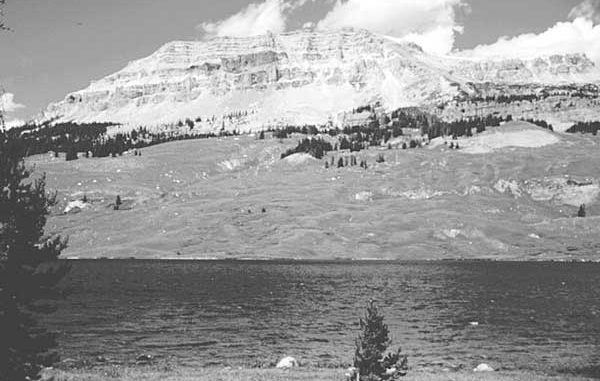
The mouth of the Mississippi River is a long way from where Bassmaster Classic anglers will launch, but those who make the run should find winning stringers waiting for them.
The vast wild region that extends some 250 miles in all directions from West Yellowstone, Mont., is home to snow-capped mountains, rolling ridges and valleys draped with towering trees and golden meadows, high desert plains with stark buttes that shoot into the sky, geysers, waterfalls and the widest variety of flora and fauna found in North America.
But for fly fishermen, the “Golden Ring” is most famous for the innumerable trout-filled rivers that run through it. Clear, sparkling waters that have earned it a reputation as a dry-fly mecca.
It’s not just the number of rivers, but their outstanding productivity. This geologically active area enriches runoff with calcium and other minerals that result in waters teeming with life. The numbers of trout species are phenomenal; many rivers hold in excess of 5,000 catchable fish per mile! And that doesn’t even include all those whitefish that natives consider a trash fish simply because they don’t jump when hooked.
If the scenario of so many rivers and so many trout — and big ones at that — seems too good to be true, well….it is. The catch is that these rivers also contain a wide variety of aquatic food organisms, especially aquatic insects by the ton. To be successful, the fly angler must not only match the hatch and make a drift-free presentation, he must also hope the fish still has an apetite after smacking at the all-you-can-eat buffet.
To watch a large rainbow snatch your fly off the surface, then peel line and backing off your reel, complete with aerial acrobatics, is — to quote one well-known fly angler — “better than sex.”
As a young boy, I was enchanted by the stories and photos my grandfather brought back from his visits to Yellowstone National Park, including his fishing lore.
My first trip came the year after our local fly fishing club formed in 1987. One of our members with vast experience out west shared with me his knowledge, and a video entitled “The Golden Ring” by Gordon Eastman. Every night that video was watched, prompting our family to extend itself and make our first trip ever to Big Sky Country.
It was more spectacular than any video or photographs could portray. As for the fishing, it was addictive. Since then, my boys and I, and on occasion, the family, have made it an annual excursion.
For years, most of our fishing was confined to the so-called “blue ribbon” waters — the Madison, Big Hole, Yellowstone, Henry’s Fork, Gallatin — to name a few. These rivers have a reputation to be over-fished, if your definition of over-fished means having a couple of anglers per mile of water. Still, there are some folks really spoiled by the idea of spending a day on the stream with the only other occupants being perhaps an elk, antelope, moose or deer.
There are abundant small rivers that fit this bill. They lack the reputation for big fish, but have adequate numbers to keep a fly angler satisfied.
The Falls River near Ashton, Idaho, originates on the west side of the Tetons, and flows through a boulder-laden canyon for several miles before tapering out in the high flatlands on the east side of the state. The upper sections are good for browns and rainbows, with stimulator and caddis patterns working well. As this river flows into the Snake River — a world-class cutthroat trout fishery — the number of cutthroats increases substantially. During late summer, a hopper pattern is the ticket.
South of Alpine, Wy., is the Grey River. The Grey is pinched in on both sides by high mountains, leaving it a heavily-bouldered stream. If you guessed “pocket water,” you’re absolutely right. The cutthroats are mostly under 14 inches, but plentiful, and most anxious to take a caddis.
Highway 189 tracks the Hoback River from Bondurant to Junction, Wy., just south of Jackson Hole. The Hoback is a great water to put kids on. The willing cutthroats will sometimes pool up in the many bends, and 50-fish days are not uncommon.
The Little Lost River, northwest of Idaho Falls, Idaho, has a deserving name. It begins in the 10,000-foot peaks of the Targhee National Forest, flows about 45 miles, then disappears into the ground. Its water reemerges as a spring near the Snake River. At first glance, it’s an ugly river, and a tough one on which to catch trout, but the fish are BIG. My son Jacob took his largest rainbow ever, a 27-inch fish, off the Little Lost.
These are just a few and there are many more. I strongly suggest the DeLorme set of topo maps or printing the maps off the web from your computer. The best time to fish Yellowstone and surrounding waters is in August and September.
Flights in September can be pretty cheap; we usually pay about $200 per person round trip from New Orleans to Salt Lake. From Salt Lake, it’s an eight-hour drive to West Yellowstone. Of course, that’s not counting all the many stops you’ll make fishing the rivers you’ll encounter on your way up.


